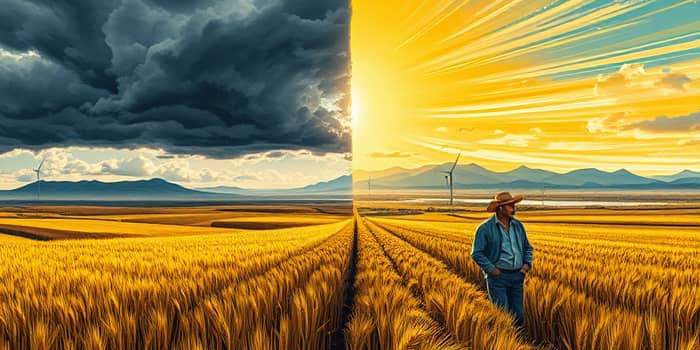
From the rolling plains of the Midwest to coffee highlands in Central America, weather remains the unseen hand guiding global agricultural markets. When droughts, floods, or heatwaves strike, the prices of staple crops and livestock products can swing dramatically in a matter of days. Farmers, traders, and consumers feel the ripples of these shifts, reminding us that weather is more than a backdrop—it is a powerful force reshaping economies and communities worldwide.
Understanding these dynamics not only informs better decision-making in agriculture and trade but also fuels innovation that can help societies adapt. By embracing both scientific insight and agile strategies, stakeholders can navigate uncertain climates and secure a more resilient future.
Agricultural output hinges on a delicate balance of environmental factors. When conditions stray from the ideal range, yields and quality suffer. For example, crops facing inadequate moisture endure stunted growth, while excessive rainfall may cause waterlogging and root disease. Livestock, too, respond to extremes—heat can stress animals, reducing weight gain and milk production, while cold snaps increase energy demands for warmth.
Historically, major price spikes in grain and oilseed markets often follow weather disasters. In these moments, crop growth and livestock productivity reveal their dependence on temperature, precipitation, sunlight, and wind. These climatic elements drive supply shortages or surpluses, creating the weather-induced supply fluctuations cause price volatility that traders and consumers dread.
Several weather variables play outsized roles in crop performance and market stability. Each element can make or break a season, prompting shifts in planting schedules, irrigation needs, and harvest volumes.
Long-term shifts in global climate patterns have supercharged weather volatility. According to the latest IPCC report, human-induced warming has slowed productivity growth in staple crops over the past half-century, particularly in regions already close to temperature thresholds. As average temperatures climb, many low- and mid-latitude farmers confront new challenges: shorter growing seasons, increased pest pressure, and unpredictable rainfall.
Scientific estimates suggest that for every 1°C rise in global mean temperature, overall crop yields could drop by 5–15%. Meanwhile, ocean warming and acidification strain aquaculture, impacting farmed fish and shellfish production. These twin pressures have added a new dimension to agricultural planning, driving investments in heat-tolerant seed varieties and advanced water-management systems.
Concrete examples illustrate how weather shocks translate into market upheaval. During the 2008 Middle Eastern drought, wheat production plunged 22%, triggering a 224% surge in import spending. Nations with limited storage and irrigation infrastructure found themselves scrambling for global supplies.
Similarly, the 2012 Mississippi River drought crippled barge transportation, delaying grain shipments and inflating domestic prices. That same year, abundant sugarcane harvests in major producing regions drove prices down to 22 cents per pound—only to skyrocket when hurricanes disrupted Caribbean plantations.
As supply fluctuates, prices respond sharply. Smallholder farmers can face ruinous losses when crops fail, while consumers endure higher grocery bills. Traders and commodity funds, on the other hand, exploit these swings, relying on traders rely on forecasting and analytics to hedge risks and capitalize on short-term trends.
To manage uncertainty, many agricultural businesses adopt a toolbox of risk mitigation strategies:
Mitigating weather risks requires holistic approaches that combine traditional wisdom with cutting-edge technology. Sustainable land-management practices, such as cover cropping and agroforestry, protect soil from erosion during intense rains. Efficient irrigation systems conserve water during dry spells, while maintaining crop health.
Innovation in precision agriculture accelerates this transition. Farmers now deploy moisture sensors, GPS-guided machinery, and drones to monitor fields in real time. With better weather forecasting guides crucial decisions, they can optimize planting dates, irrigation schedules, and input application.
Ultimately, embracing sustainable methods and modern tools can lead to a new era in farming—one where sustainable agriculture balances productivity with preservation, ensuring food security even as the climate shifts.
Weather will always be a wildcard in agricultural markets, but it need not be an insurmountable threat. By leveraging data-driven insights, diversifying risk, and championing resilient farming techniques, stakeholders can transform volatility into opportunity. Whether you are a grower in the field, a trader on the exchange floor, or a consumer at the grocery store, understanding embracing innovation fosters resilience in agriculture empowers you to thrive in an ever-changing world.
References













